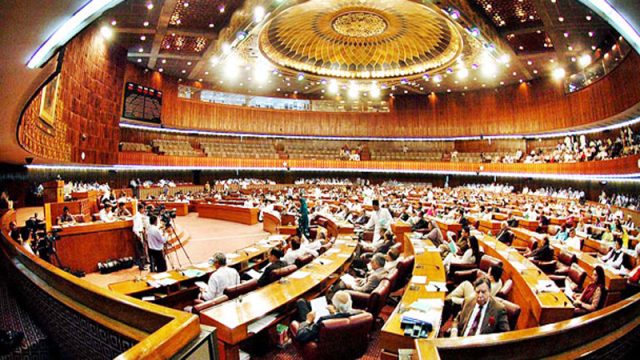
 Female lawmakers sponsored 28 percent parliamentary agenda; their attendance also deceased during 2020-21
Female lawmakers sponsored 28 percent parliamentary agenda; their attendance also deceased during 2020-21
Their business suffered from neglect. Only 8 percent of the female-sponsored private members’ bills were passed while 54 percent of their bills stood referred to the committees
Islamabad: In comparison with the previous parliamentary year (2019-20), the contribution of female lawmakers to the parliamentary agenda witnessed a decline in 2020-21 from 33 percent to 28 percent.
Likewise, the average attendance of female lawmakers has also decreased since last year; falling from 80 percent to 76 percent in the National Assembly, and from 75 percent to 67 percent in the Senate, says a report released by Free and Fair Election Network (FAFEN).
Constituting only 20 percent of the Parliament, female lawmakers contributed 28 percent parliamentary agenda during 2020-2021. Their performance matched, or in some instances exceeded, the performance of their male colleagues in both agenda contribution and attendance.
On average, each female MNA attended 76 percent Assembly sittings and sponsored eight agenda items whereas each male MNA attended 60 percent sittings and sponsored five agenda items. Similarly, each female Senator attended 67 percent sittings and sponsored three agenda items whereas each male Senator attended 60 percent sittings and sponsored four agenda items. Of 65 non-performing parliamentarians, only seven – four MNAs and three Senators – were female.
Female lawmakers – singly or jointly with other lawmakers – sponsored 33 percent (86 out of 260) private members’ bills, 30 percent (30 out of 106) resolutions, 56 percent (48 out of 86) calling attention notices (CANs), and 27 percent (445 out of 1668) questions in National Assembly and the Senate. In addition, they also initiated 31 percent (29 out of 92) motions for debate on issues of public importance and 23 percent (five out of 21) proposals for amendments in the National Assembly Rules of Procedure and Conduct of Business. In addition to their contribution to the agenda, female lawmakers also actively participated in the debates on scheduled business and in raising Points of Order and Matters of Public Importance.
However, despite female lawmakers’ remarkable contributions to agenda, their business suffered from neglect. Only eight percent (five out of 59) of the female-sponsored private members’ bills were passed while 54 percent (32 out of 59) of their bills stood referred to the committees after their introduction in the House. On the other hand, 12 percent (19 out of 154) male-sponsored private members’ bills completed the three readings and 55 percent (85 out of 154) were referred to the relevant committees. Twenty-four percent of the female-sponsored bills were not taken up as compared to 14 percent male-sponsored bills which remained unaddressed. Similar was the case with female-sponsored resolutions. Only seven (32 percent) of the 23 female-sponsored resolutions were adopted as compared to 42 (57 percent) male-sponsored resolutions.
_______________________